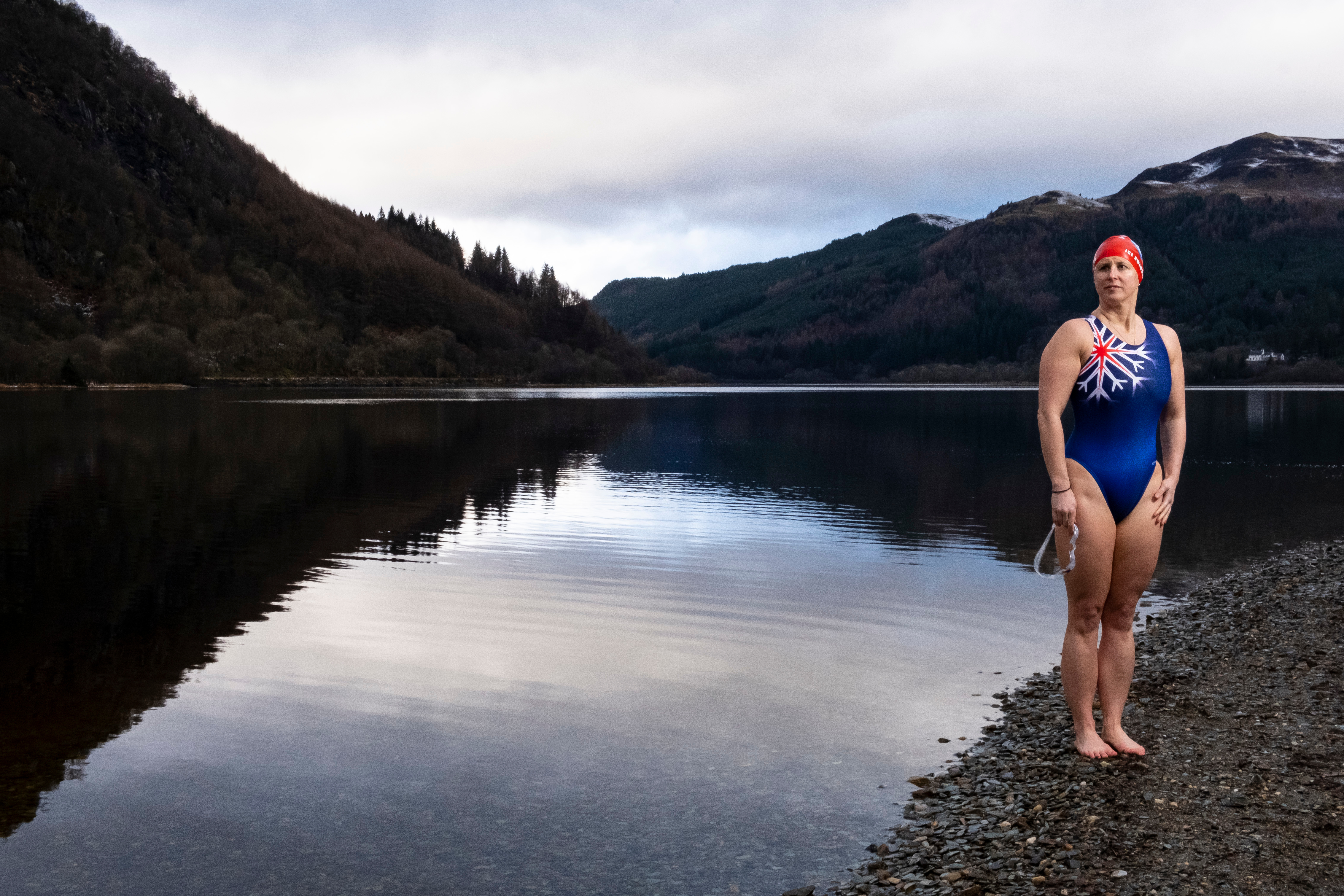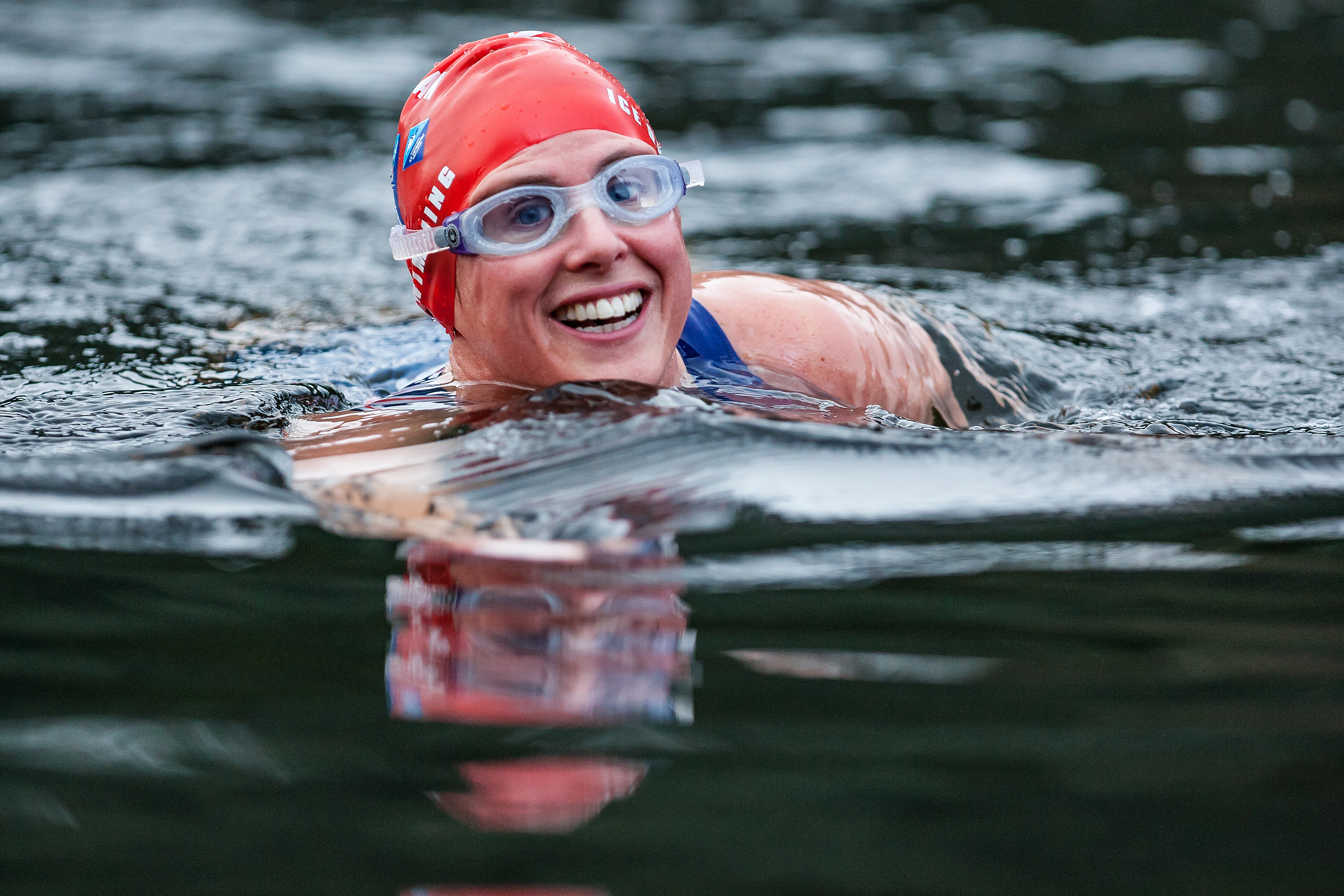
CHAMPION ice swimmer Jade Perry gets to cover herself in hot chocolate because she is shaking so much from the effects of the freezing water.
But, despite admitting to being terrified at the prospect, she is about to race in the International Ice Swimming Championships in Murmansk, Russia, on the edge of the Arctic Circle.
Ice swimming takes place in water colder than 5°C and is considered too dangerous to become an official Olympic sport.
Jade, 34, from Helensburgh, the current UK ice swimming 1km champion, says swimmers are closely monitored before events and have to submit echocardiogram results to show their heart is in good health.
And even once the race is finished, competitors need to be closely watched in case of a phenomenon called “afterdrop”.
“That’s when you feel relatively fine in the water but then you get out and the colder blood in your extremities moves into your core,” Jade, who works for Network Rail, explained.
“Your temperature can drop dangerously after you’ve finished swimming in the cold water. My reaction can be quite spectacular, after I come out I can get really quite violent shakes. It’s hilarious! I end up covered in the hot chocolate I’m drinking to warm myself up – which I guess is good for the spectators.”
Despite the safety measures those taking part in ice swimming risk experiencing severe hypothermia – which happened to Jade last year.
“On my birthday last year I did a short 2km swim against the current off Colonsay,” she explained.
“The water was 9°C, which is technically quite warm – but I got very bad hypothermia.
“My memory is gone from when I got out of the water until about 20 minutes later but apparently I got very angry and didn’t know where I was. I told everyone I hated them! You can imagine how dangerous it would be to do it on your own.”
Despite the dangers, Jade says ice swimming has a positive effect on mental health, which keeps competitors coming back.
“You never see someone getting out of the water who isn’t smiling,” she said. “There’s always a lot of laughter. “You’re so cold afterwards you don’t care. No one cares about body image. When you’re in the water you’re not thinking about work, or what you’ve got to do when you get home. You’re concentrating on not dying.
“It’s a meditative state, you’re just in the here and now. It’s wonderful!”
Jade insists the most difficult part isn’t the race – it’s getting in the water.
“You’re not allowed to jump in,” she explained. “You have to climb down a ladder, then climb out again via a ladder, which is horrible. I like to walk in.
“Frankly I’m terrified. I’ve practised swimming in cold water before but getting into 0C water is going to be difficult. For comparison your local swimming pool may seem cold but it’s actually around 30C.
“Would you want to take your clothes off in -14C air temperature? I’m looking forward to it but I’m terrified.”
Competitive swimmer Jade took part in a charity swim of the English Channel a few years ago when she discovered her talent for swimming in colder waters.
“I started swimming through winter I’ve always competed in a pool environment to a high level but I’ve found in open-water swimming I’m quite fast in comparison to other competitors.
“And in ice-water swimming I was very fast in comparison – I think it’s because the number of people competing drops off.
“It’s very hard to go fast in cold water.”
Jade loves to train in Scottish lochs. “When I started swimming in lochs it was a big change from open-water swimming in England.
“The lochs are so clear, you can see all the way to the bottom – which can be a bit scary, but it is undoubtedly beautiful.
“But sometimes when you’re swimming you can have a drink of ice cold water.
“After you’ve been going for an hour it can be lovely! It’s almost the same as a cold beer.”
The GB Ice Swimming team isn’t funded so Jade is trying to raise money to go to Murmansk next month.
Jade is looking for support at gofundme.com/the-swimming-ice-world-championships

Enjoy the convenience of having The Sunday Post delivered as a digital ePaper straight to your smartphone, tablet or computer.
Subscribe for only £5.49 a month and enjoy all the benefits of the printed paper as a digital replica.
Subscribe